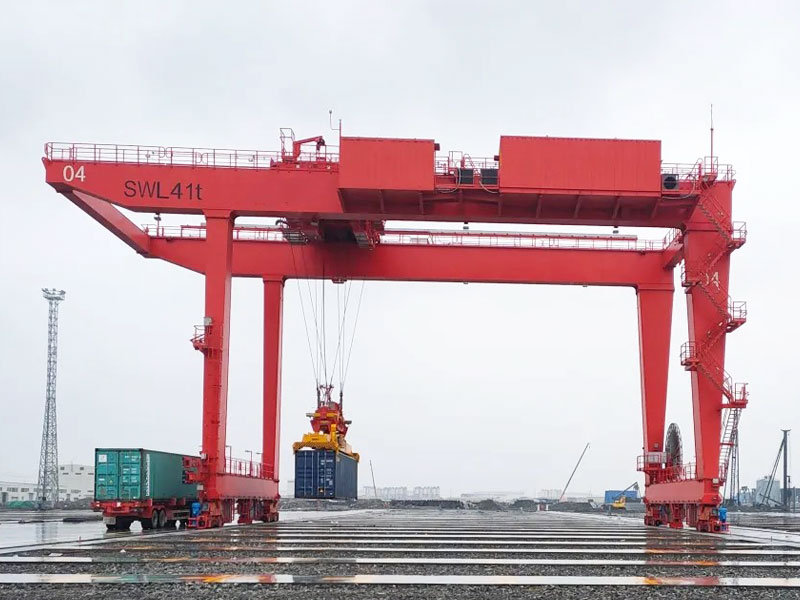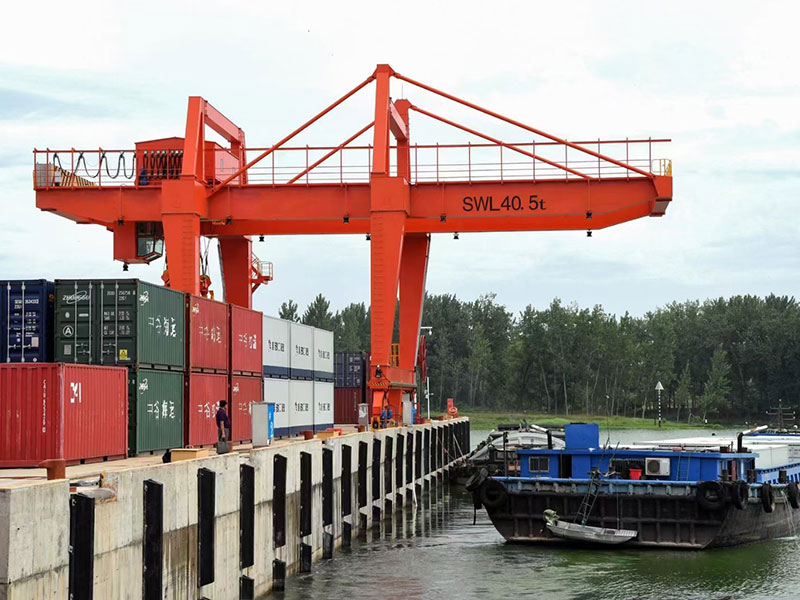In the dynamic world of logistics and port operations, efficiency and precision are paramount. As global trade continues to thrive, the role of container handling equipment becomes increasingly crucial. One such technological marvel that has been transforming the landscape is the Rail-Mounted Gantry Crane (RMGC). This article delves into the significant impact of RMGCs in container handling, exploring their benefits, operational prowess, and the revolution they bring to port logistics.
The Evolution of Container Handling
Before the advent of RMGCs, traditional container handling relied on conventional methods that often posed challenges in terms of speed and precision. The need for a more streamlined and efficient solution led to the development of RMGCs, which marked a significant leap forward in port technology.
Enhanced Efficiency
RMGCs are designed to operate on rail tracks, offering a structured and organized approach to container handling. Unlike conventional cranes, rail mounted container gantry crane can traverse the entire length of the port on rails, providing a more extensive reach and coverage. This feature contributes to a substantial increase in efficiency, as these cranes can handle a larger number of containers in a shorter timeframe.

Precise Container Positioning
One of the key advantages of RMGCs lies in their ability to precisely position containers with unmatched accuracy. The rail-mounted structure ensures a stable and controlled movement, allowing for pinpoint accuracy when picking up or placing containers. This level of precision minimizes the risk of accidents and damage to goods, a critical factor in the delicate world of logistics.
Optimizing Port Layout
RMGCs play a pivotal role in optimizing port layout and space utilization. Their ability to move horizontally along the rails means that they require less maneuvering space compared to traditional cranes. This feature is particularly beneficial for ports with limited space, allowing them to maximize container storage capacity without compromising on operational efficiency.
Seamless Integration with Technology
Modern RMGCs are equipped with advanced technological features that further enhance their operational capabilities. Automated systems, remote control options, and real-time monitoring ensure seamless integration into the broader logistics ecosystem. These technological advancements not only improve efficiency but also contribute to overall safety and security in container handling.

Environmental Impact
Beyond operational efficiency, RMGCs have a positive environmental impact. Their electric power sources, coupled with advanced energy-saving technologies, make them more environmentally friendly compared to their traditional counterparts. As sustainability becomes a focal point in various industries, the adoption of RMGCs aligns with global efforts to reduce carbon footprints.
Challenges and Future Developments
While RMGCs have revolutionized container handling, it is essential to acknowledge potential challenges such as initial costs and maintenance. However, ongoing research and development are addressing these concerns, with the aim of making RMGCs more cost-effective and user-friendly.
The unveiling of the power of Rail Mounted container cranes in container handling marks a significant milestone in the evolution of port logistics. Their efficiency, precision, and environmental benefits position them as a key player in the seamless movement of goods across the globe. As technology continues to advance, RMGCs are set to play an even more integral role in shaping the future of container handling, further solidifying their status as a game-changer in the world of logistics. For more infomation about materials handling solutions, just check here https://aicraneglobal.com/.